A gift from 30 million years ago
< Wakamatsu North Coast is one of the best fossil observation spots in Japan >
Feature PICK UP 若松トピックス
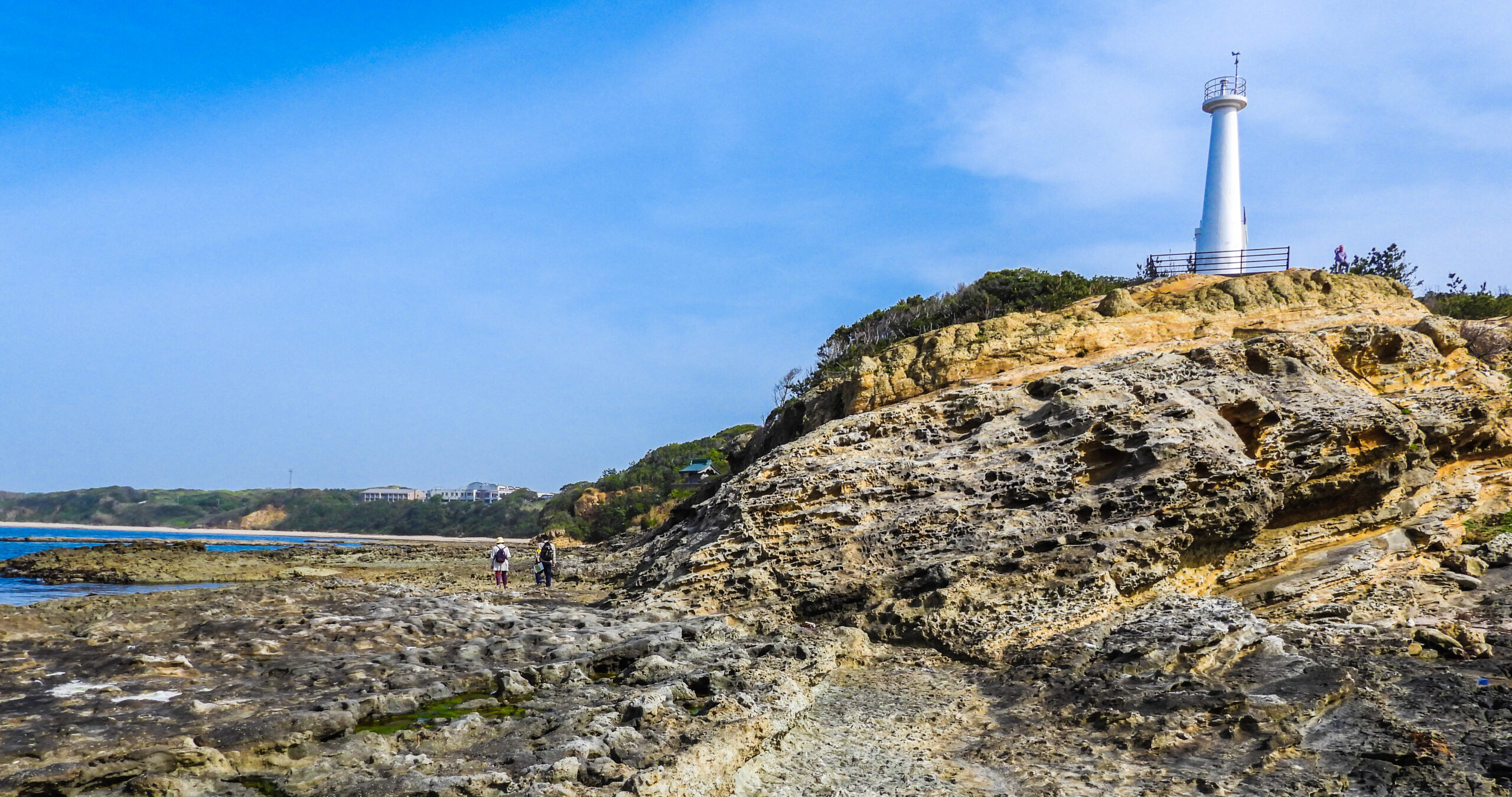
Walking through 30 million years old strata
Around Iwaya and Tomigahana, a stratum called the "Ashiya Strata " is exposed. In the 1980s, a fossil of a Yamato whale, a member of the mysticete family, was discovered here, and it is one of Japan's best fossil observation spots, where you can touch burrow fossils of mud shrimp and fossils of bivalves on the water's edge.
The discovery of the "Ashiya Strata" about 30 million years old, was triggered by an investigation of the coal layers around the mouth of the Onga River in the 1920s. The discovery of fossils in the strata deposited on top of the coal layers increased the academic importance of the formation from the perspective of sedimentology and fossil research, and researchers at the time named it the Ashiya Strata.
Since then, numerous animal fossils have been discovered in the Ashiya Strata, which stretches from Ashiya to Wakamatsu North Coast, Ainoshima, and Umajima. The number of shellfish fossils found is unprecedented in Japan, making the area well-known paleontological area both in Japan and overseas.
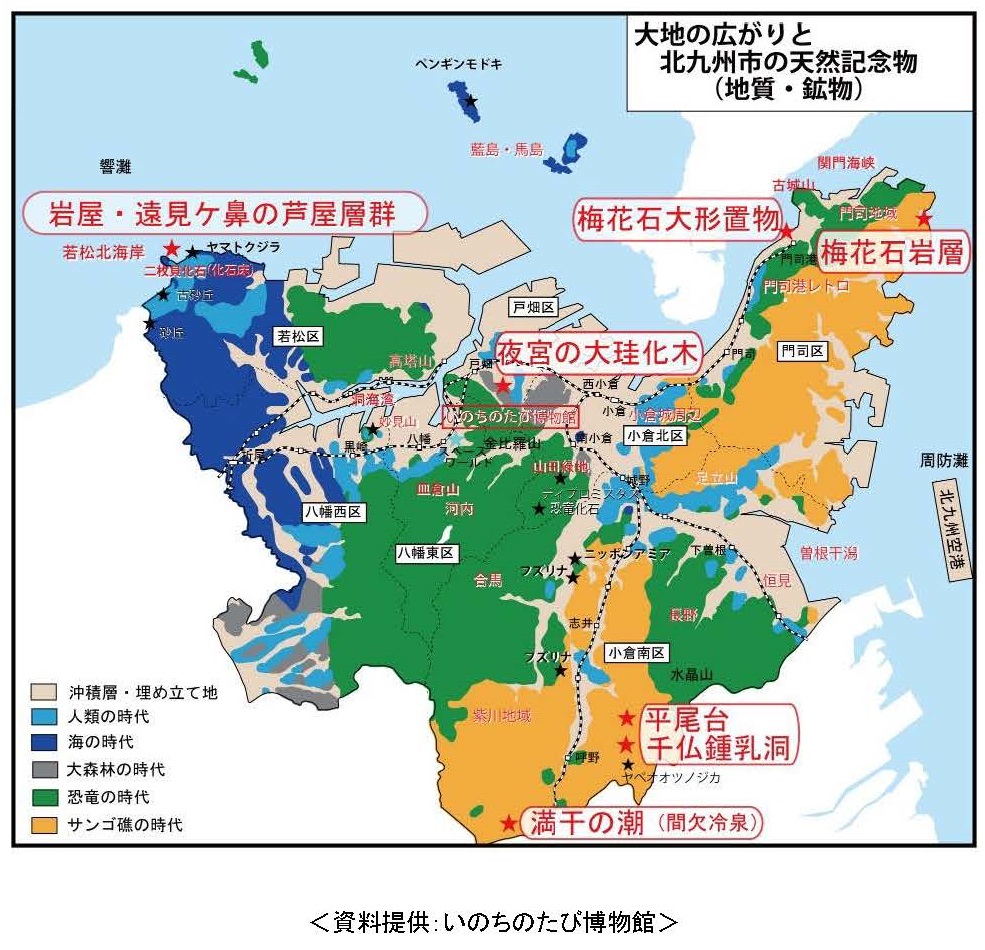
Fossils found on Wakamatsu North Coast
The Ashiya Strata, which formed in the warm seas of a subtropical oceanic climate during the Early Oligocene (about 30 million years ago) is thought to have had a wide area of shallow waters, and shellfish fossils that accumulated in relatively shallow areas have been found in Iwaya, Ainoshima, Shimonoseki, and other places.
More than ten types of shark tooth fossils have been discovered which are valuable materials for understanding the ecology of sharks that lived during the Oligocene and fossils of Protopterum also known as the "penguin modoki" a flightless seabird and whale fossils have also been found.
The fossils of the head, mandible, vertebrae, and forelimbs of the Yamato whale found near Tomigahana show characteristics that support the time when toothed whales evolved into baleen whales. When whales, which are mammals, moved from land to the sea, they had teeth, but later, as they adapted to the sea, they changed into baleen, which made it easier to catch food. The fossils in the Ashiya Strata have a lot of valuable information that can help elucidate the evolution of these marine vertebrates.
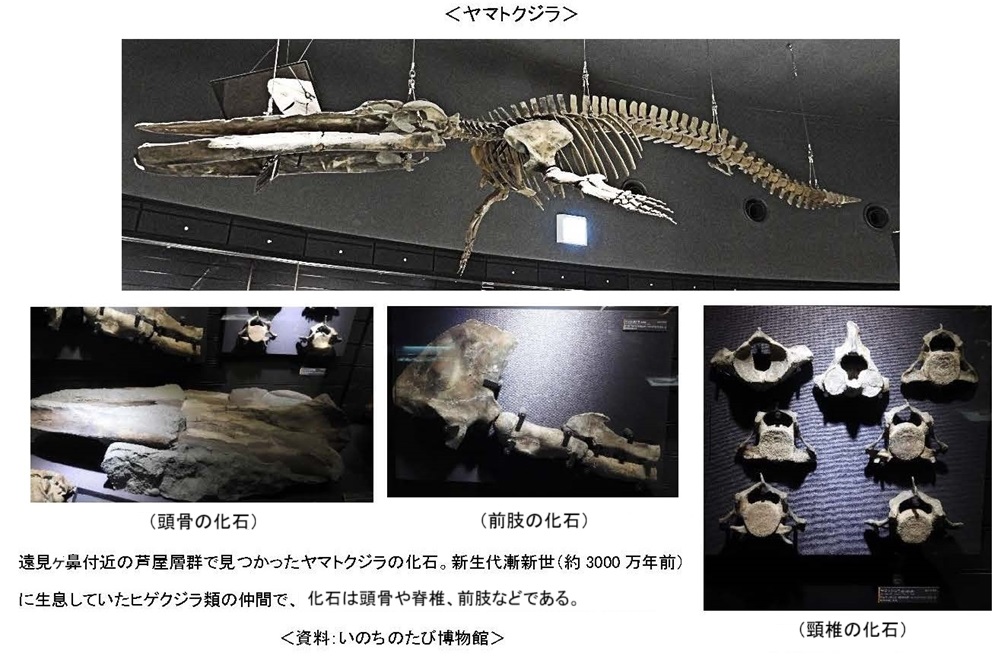
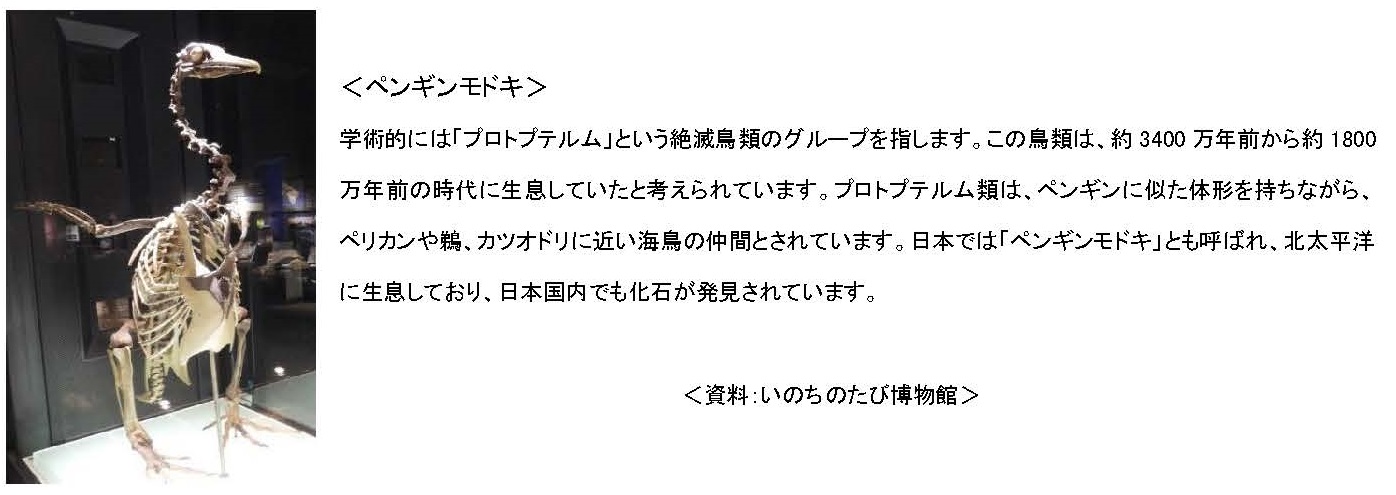

"Fossil and Geological Observation Event" by KMNH
In order to learn about the history of living things and the history of the Earth through fossil observation protect and preserve the value of fossils and convey this to future generation KMNH holds a fossil observation event for elementary school students every year on "Geology Day". In preparation for the observation event, we explored the area around Tomigahana with curator Yasuhiro Ota, who came to check the area out.
- Can anyone participate in the observation event?
Mr. Ota: The class is limited to about 15 children and parents and children participate together. We learn about fossils in classes for sixth graders. The interest in nature that children have as children gradually fades as they become adult, and they no longer visit museums but when they become parents their interest in fossils and dinosaurs seems to be revived. In that sense we are teaching children the joy of learning about fossils and geological strata.

- It feels like there are a lot of shell fossils around here at your feet.
Mr. Ota: The ones here are from a time when shellfish proliferated but before that there was a time when shrimp and crabs proliferated. However, there are no fossils a little further away so you can see the changes in the environment. Some people believe that the reason the shells are concentrated here is because an environment where a large number of shells died appeared, and they were carried here by the waves.
You can see bivalves and spiral shell they are very hard, so they have been preserved for 30 million years. Because they are here as if they are a matter of course the preciousness and value of these fossils is not conveyed. There are only a limited number of strata where fossils are buried, and there are no more fossils below this thin layer. Only a small part of the strata is left as a fossil after the death of an organism. This is the only place in Japan where such fossils can be seen.
The strata usually run horizontally, so the vertical pipe-like things are traces of burrows made by organisms. When sand accumulates in burrows made by shrimp or crabs, the space of the burrow is coated, making it harder than the surrounding sand and remaining in the strata. It is a common sight here, but it is a rare sight that cannot be seen anywhere else.
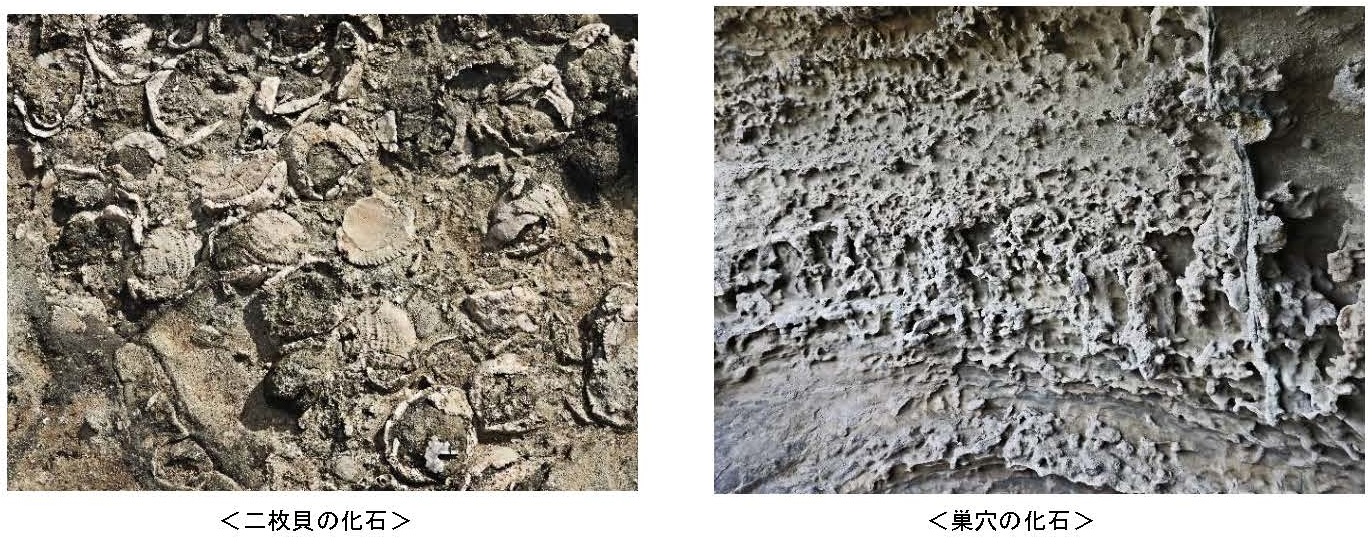
Also, if you walk a little, a fossil of a shell that was under your feet will now appear above your head. This is because the strata are tilted, and it is thought that the strata have risen due to a major earthquake or something. Kitakyushu does not have many earthquakes, but I think there have been some pretty big earthquakes between 30 million years ago and the present.
- The strata under the lighthouse have a different appeal than those at the edge of the surf.
Mr. Ota: This place is listed in the Wakamatsu tourist guide and is likened to the Cote d'Azur in southern France. The reason why this place is so beautiful is because it is orange in color, that is, it contains iron. It turned orange when it oxidized. If there was more iron, it would turn red.

Another characteristic is that the strata are undulating, and the place where these strata formed is the bottom of the sea. These strata are still forming on the bottom of the sea. Normally, the sand accumulates deep but when there is a storm the vibrations reach the depths of the sea and pressure is applied causing these swells.
One of the reasons for the beauty of the scenery in Genkai Quasi-National Park is that the hard parts that form the strata protrude and the crumbling parts are depressed forming the coastline. It is easy to say that the scenery is beautiful, but I would like people to feel the changes in the earth and nature that create it.
― The more you talk about it, the more I realize that Wakamatsu North Coast is a deep place.
Mr. Ota: Because Kitakyushu is an industrial city, the coast has been reclaimed and not much natural coastline remains. Currently, only a few remain, such as this place and some areas of Shinmoji. This makes Wakamatsu North Coast an extremely valuable place.
There may be other places where we can learn about what it was like in other eras, but this is the best place to learn about the global environment 30 million years ago. For this reason, students studying fossils and geological strata visit this place where the Ashiya Strata is exposed.
The precious fossils and unique geological strata of Wakamatsu North Coast seem to be more highly valued by people from other regions than by locals. However, this place is being preserved by people who care about the local area. The challenge going forward will be how to increase the economic value of this place while preserving it and link it to urban development.
* The document photographs and on-site interviews were provided with the cooperation of Tomoyuki Ohashi and Yasuhiro Ota, curators of the Kitakyushu Museum of Natural History & Human History (KMNH).
Kitakyushu Museum of Natural History & Human History (KMNH). https://www.kmnh.jp/








